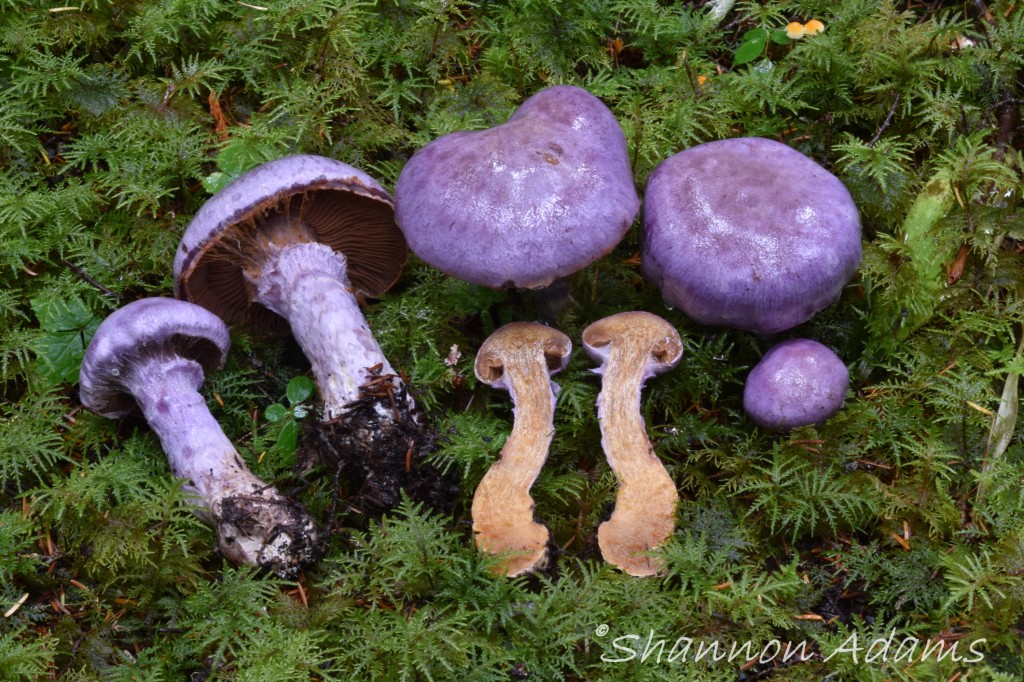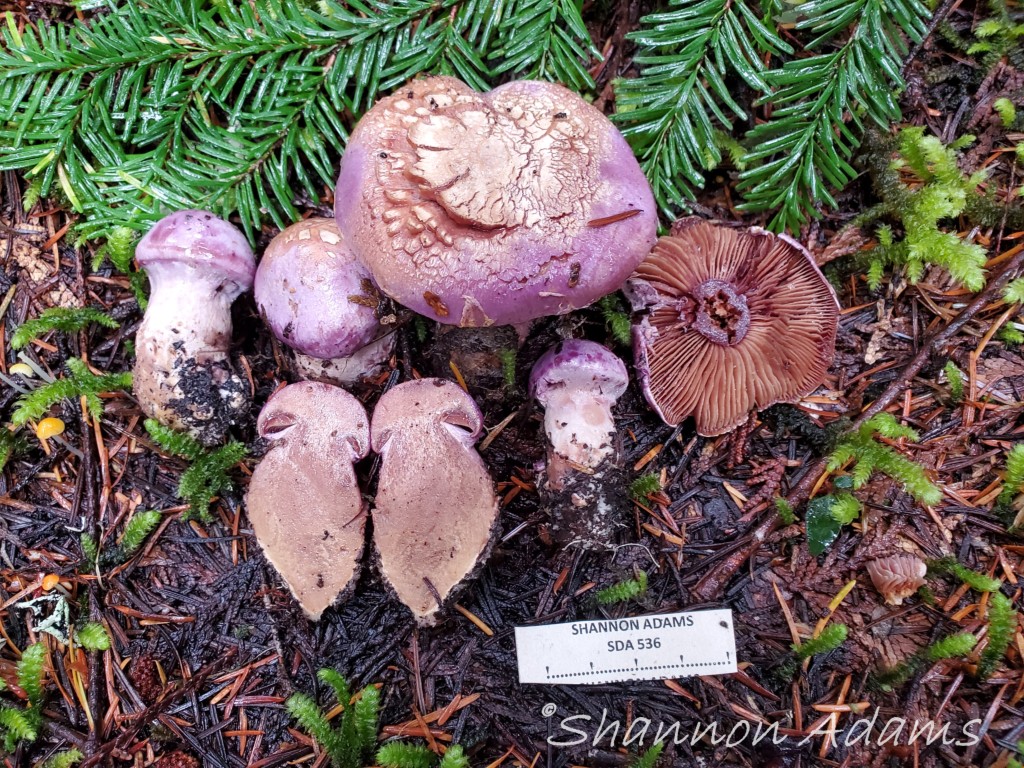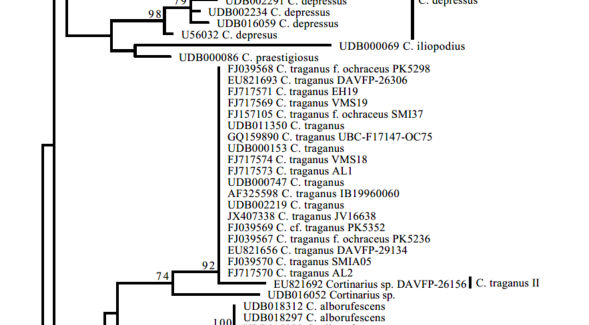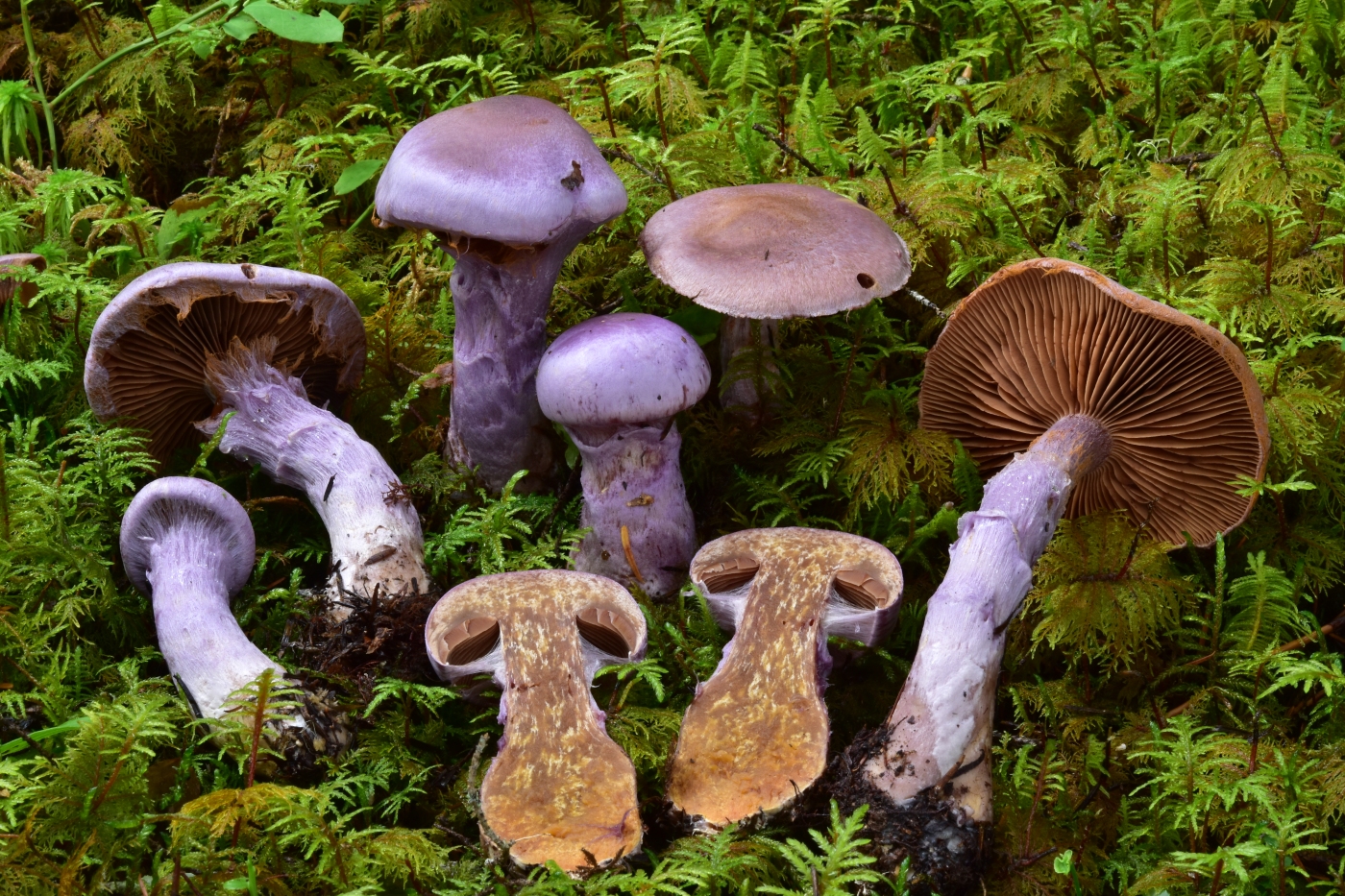Cortinarius traganus (Fr.) Fr., Epicrisis Systematis Mycologici: 281 (1838) [MB#164677]
Description:
Cap 40 – 90 mm wide, hemispherical when young, then convex to plane, surface dry, tomentose, often cracked and scaled with age, lilac when young, fading to lilac-grey or pallid brown, gills ochre when young, darkening to rust brown, never lilac or purple toned, stipe 45 – 140 mm long, 8 – 23 mm wide at apex, clavate with almost-bulbous base, lilac when young covered in wooly lilac veil which often forms an annular zone on the stipe, flesh a distinctive saffron to yellow-brown even in young specimens, odor fruity, pear-like odor habitat coniferous forests, montane, common in Washington and Oregon Cascades.


on cap surface.
Discussion:
Although Cortinarius traganus is a common and often collected species in the Pacific Northwest, beginners have trouble differentiating it from the many other purple species. Key points to note to identify it with confidence are odor, young gill color and color of flesh. In the table below, C. traganus has a fruity odor, C. camphoratus has an odor described as goat-like or rotting potatoes which most people find highly unpleasant.
| Species | Cap | Gills | Flesh |
| Cortinarius traganus | Lilac-violet, dry | Always yellow to red ochre | Mottled brown-yellow |
| Cortinarius camphoratus | Lavender-grey, dry | Lavender to Cinnamon-brown | Grey to lavender |
| Cortinarius occidentalis | Grayish-purple to lilac, bruises purple | Lavender, bruising purple | Lavender to purple when cut |
ITS:
I did not sequence this one. However, reference sequences can be seen below in Garnica et. al. (2016).

Bibliography:
Garnica, Sigisfredo, Max Emil Schon, and Kessy Abarenkov. “Determining Threshold Values for Barcoding Fungi: Lessons from Cortinarius (Basidiomycota), a Highly Diverse and Widespread Ectomycorrhizal Genus.” FEMS Microbiology Ecology 92, no. 4 (2016).

Leave a comment